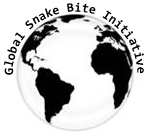
User loginNavigationWho's onlineThere are currently 0 users and 1 guest online.
|
Papua New GuineaPapua New GuineaDavid Williams shares his motivation:
Papua New Guinea
Papua New GuineaNational Flag Map of Papua New Guinea Capital: Port Moresby Official languages: English, Tok Pisin, Hiri Motu Total area: 462,840 km2 Estimated population: 6,300,000 Rural area: 82% Huli Wigman from the Southern Highlands Hope, disappointment and small victories: the opportunities, obstacles and challenges of improving snakebite management in Papua New Guinea
Snakebite education in the developing world: training essentials, curriculum development and practical challenges
The New Guinea small eyed snake (Micropechis ikaheka): a case study in how basic research into venom composition improves our understanding of clinical syndromes of envenoming, and provides insights into antivenom suitability
Origin of the eastern brownsnake, Pseudonaja textilis in New Guinea: evidence of multiple dispersals from Australia, current distribution, clinical experience and public health resource implications
|